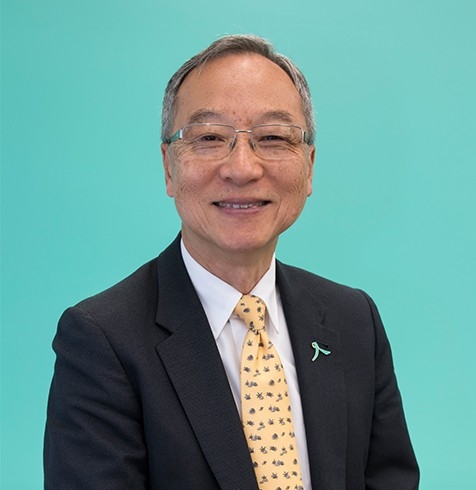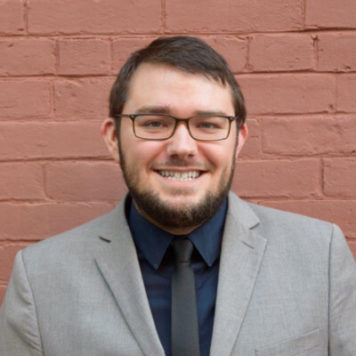Samuel So, MD, is the Lui Hac Minh Professor and a Professor of Surgery at the Stanford University School of Medicine, founder of the Stanford Liver Cancer Center, and the founder and executive director of the Asian Liver Center at Stanford University School of Medicine.
Your research and practice have focused on viral hepatitis and liver cancer prevention, research, treatment, and policy. What led you to this field of medicine?
I started my professional career as a liver and kidney transplant surgeon. When I moved to the West Coast, I recognized that due to the large population of Asian Americans, there was a large burden of Hepatitis B and Hepatitis C. Most of the patients we were performing transplants on at that time had liver disease and liver cancer caused by Hepatitis B and C. Since Hepatitis B was so under-recognized and ignored at the time, it motivated me to establish the Asian Liver Center at Stanford with a focus toward addressing gaps in awareness. Even in high prevalence populations, many people are not aware of the risk and the need for testing and treatment.
There was little interest in Hepatitis B from the medical community at large, and we needed to get more people’s attention to make a difference. To do so, I borrowed from the lessons I learned from HIV and breast cancer, and felt that to become aware, you need to have a brand. In 2000, we launched the Jade Ribbon Campaign using shades of green as a rallying call around the world to eliminate Hepatitis B. I’m pleased that many liver cancer and liver organizations have also adopted different shades of green to raise awareness. What we need is for people around the world to rally behind a symbol to tackle this problem. It is challenging to raise awareness about a health problem.
As a transplant surgeon, we work our butts off to just save one life. There are not many people that we can transplant every year and the cost of a transplant is enormous. Viral hepatitis is a disease where we can eliminate deaths and suffering by early diagnosis and treatment. As a surgeon, it is a no-brainer. It is easier than surgery and has a more significant impact. If you vaccinate everybody, you prevent anybody in the future from developing a chronic Hepatitis B infection. If you screen and treat everyone, there will be very few people who would die from liver cancer and liver cirrhosis caused by Hepatitis B.
Approximately 1 in 30 people worldwide were living with chronic Hepatitis B, which causes over 60% of liver cancer cases worldwide. What are the biggest challenges to Hepatitis B elimination efforts around the world?
One major challenge is that most people do not know these facts. People know more about HIV, TB, and malaria, but there has never been much attention towards viral hepatitis and how many deaths it causes. Instead of categorizing chronic Hepatitis B and C as a chronic liver disease, it is more commonly characterized as an infectious disease. People do not make the connection that chronic Hepatitis B and C are major causes of liver cancer. In addition, the liver cancer community does not express liver cancer burden in terms of Hepatitis B and C. As a result, there is no comprehensive approach to eliminating Hepatitis B.
If you talk to people in the immunization community, like the Global Alliance for Vaccination and Immunization, they believe that if you vaccinate newborns against Hepatitis B, then it is a done deal. However, they do not focus on testing and treatment of the almost 300 million people living with chronic Hepatitis B. Even though vaccination can protect the next generation, you are not having any significant impact on reducing the deaths among people currently living with Hepatitis B.
Most countries have not mounted a comprehensive program to eliminate Hepatitis B, which should involve universal vaccination. It should also involve raising awareness about vaccination and treatment in addition to challenging misconceptions and stigma. We need a program where Hepatitis B testing and treatment can be incorporated into primary care. People should screen for it regularly like diabetes or high blood pressure, so that people who are affected have access to care and antiviral treatment.
There is a higher prevalence of Hepatitis B outside the United States, especially in Asia. As the founder and executive director of the Asian Liver Center at Stanford University School of Medicine, what can we do to improve Hepatitis B prevention and treatment among Asian populations in particular?
After we established the Asian Liver Center, we initially focused a lot of our initiatives in China because they have the greatest burden of disease. This way, if we can develop model programs in China, it could be a model for the rest of the world. Around 20 years ago we partnered with the China Foundation for Hepatitis Prevention and Control. At that time, China had introduced a universal newborn Hepatitis B vaccination program. Initially, much of the vaccination process was not free. Many children, especially in the poor provinces, were not vaccinated at birth.
In partnership with the China Foundation and with donor support, we started launching catch-up vaccination in different parts of China. We eventually had the largest free catch-up vaccination program, which was launched in a Northwestern province in China called Qinghai. Over the course of two years, we vaccinated more than half a million unvaccinated children with this program.
My goal was to inspire the government to observe the success of this program and replicate it nationwide. We were pleased that at the end of our demonstration project, the government launched a three-year catch-up vaccination program where they provided three free vaccines for roughly 60 million unvaccinated children in China. Our research exhibited that the Chinese government would be saving money by launching this program nationwide. This program was highly successful, especially in addressing the needs of underserved minority populations.
Our latest of efforts have been trying to convince the Chinese government to invest in a nationwide treatment program with evidence-based research. Last year we published a cost-effectiveness study, which highlighted that if China can meet the WHO 2030 target of getting 80% of people who need l hepatitis B treatment, it would save an additional three million lives and about 500 billion US dollars’ worth of future healthcare costs. This idea was presented by my colleague in Beijing at the World Hepatitis Day Summit. It received a lot of attention by Chinese leadership, but I’m still waiting for them to announce a nationwide campaign. In an in-depth interview to the official Chinese press about the progress and gaps in hepatitis B prevention and control in China and in the world to be published on World Hepatitis Day, I again emphasized the importance of a comprehensive national program to eliminate hepatitis B elimination in China.
July 28th is World Hepatitis Day, a day to highlight the continued global burden of viral hepatitis despite the options that exist for vaccination, testing, and care. What message do you have for the public health community on this day?
Most of the messages we have tried in the past never worked. One that I feel is timely is the World Health Organization message, “It’s time to test, it’s time to treat.” I think that is the best message we have – the time is now.




